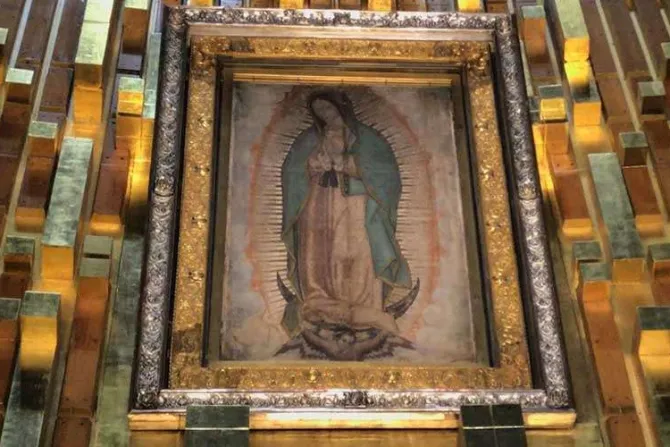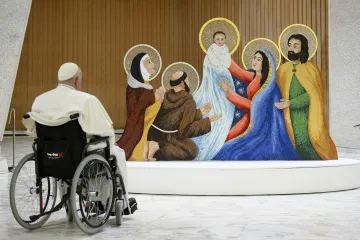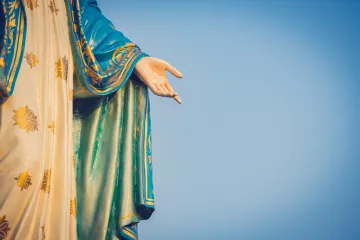Chávez was blunt: “The image doesn’t float”; rather “it’s imprinted on the tilma.”
“Nor are there two or three images placed one on top of the other,” as some claim, he explained.
Is Our Lady of Guadalupe a Catholic adaptation of an Aztec goddess?
Some scholars have promoted the idea that the Virgin of Guadalupe is a Catholic adaptation of the Aztec goddess Coatlicue Tonantzin, who is a combination of a woman and serpents, and a symbol of fertility.
However, Chávez said that Our Lady of Guadalupe is not an adaptation of a goddess and has nothing to do with idolatry.
“She’s not called Coatlicue, which would be idolatry; she’s called Tonantzin, which isn’t any kind of idolatry but means ‘our venerable mother’ and, as the Indigenous affectionately say, ‘our dearest mother.’ It’s a title, it’s not idolatry.”
“The missionaries of the 16th century would never have made up a costume for a pagan goddess. That’s completely false,” he underscored.
Is there music hidden in the image of the Virgin of Guadalupe?
Based on mathematical analysis, Mexican accountant Fernando Ojeda discovered music embedded in the image of Our Lady of Guadalupe, Chávez explained.
Viewing the flowers and stars in the image of the Virgin as if they were musical notes, Ojeda outlined and found a melody.
Chávez said that analysts repeated the experiment with copies of paintings from the 16th and 17th centuries, “where stars and flowers are placed at the painter’s discretion,” but the only thing they produced was “noise, not harmony.”
(Story continues below)
Subscribe to our daily newsletter
“Only with the original does a perfect harmony emerge, with a symphonic arrangement. It is true — music comes forth from the image of the Virgin of Guadalupe,” he affirmed.
Was there a light miraculously projected on the womb of the Virgin of Guadalupe?
For Chávez, “it’s hard to know if it was a miracle at that time because we don’t know if it was a ray of light that happened to hit upon one of the nearby metal objects, projecting a light on her womb.”
“What we do know is that she is the defender of life,” he said, pointing to “the simple fact that she has a dark ribbon over the womb, which means she’s pregnant and that therefore Jesus Christ Our Lord is in her immaculate womb.”
Can words be seen on the image of the Virgin of Guadalupe?
Responding to those who say they can see the word “peace” on the image, Chávez said “I don’t see that anywhere.”







